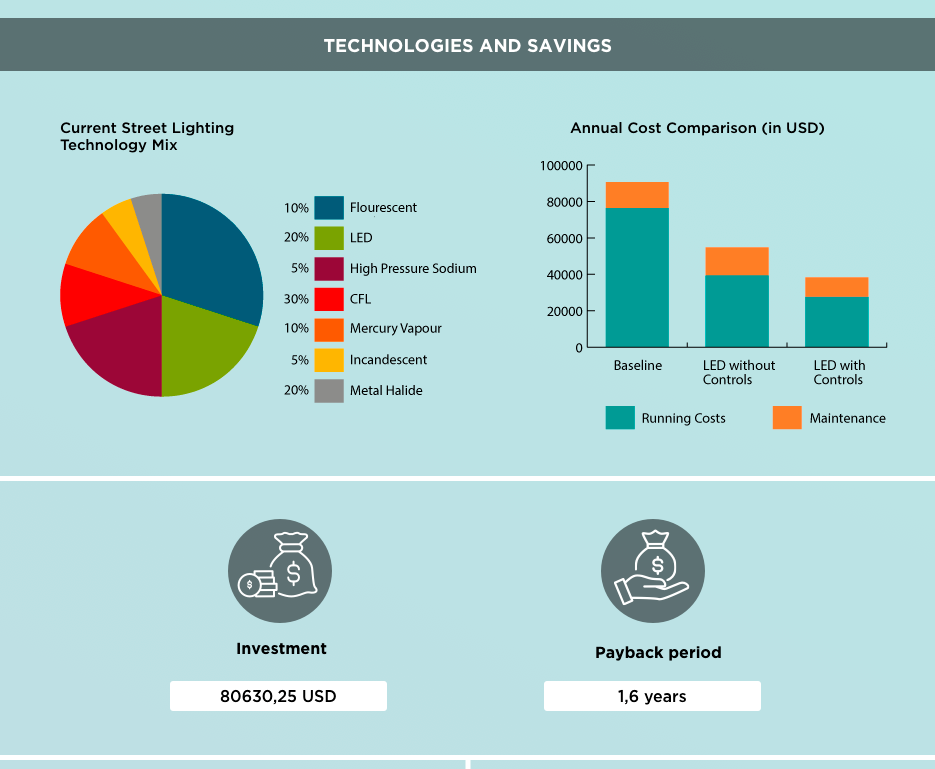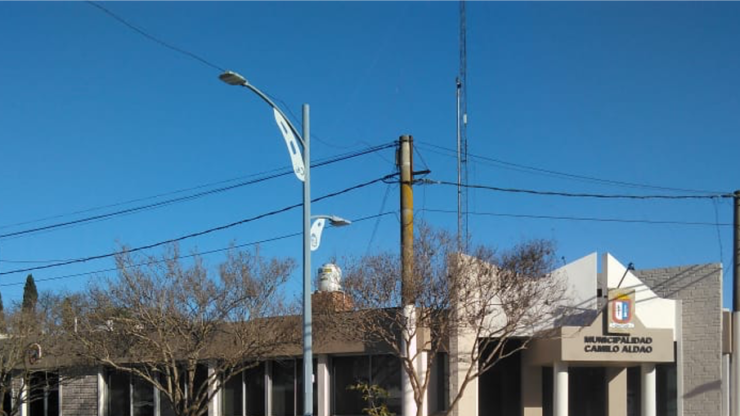The tool quantifies the energy, financial and climate-saving potentials for moving away from existing inefficient street lighting technologies to intelligently controlled and efficient LED systems.
With an analysis of the potential energy and CO2 savings, as well as a straightforward cost-benefit overview for any locality, city or country based on current street lighting technologies, the tool provides local governments with a detailed understanding of the specific savings and financial opportunities.
“With this tool, we hope to ease not only the process of decision-making but also the process of investing, by providing the data on energy and financial savings as well as emissions reductions,” says Gabriela Dias, Head of Business Models and Markets at UNEP DTU Partnership.
Analysis and overviews available for everyone
The new Street Lighting Energy Efficiency Tool was developed by experts at UNEP DTU Partnership’s Copenhagen Centre on Energy Efficiency with the support of United for Efficiency. It is based on extensive market surveying, technical input and quality testing from global partners and experts and uses industry energy efficiency lighting standards.
To ensure that the benefits of using the tool are available to all, it has been designed as a self-assessment savings tool, which can be used by practitioners without any training or introductions. By simply going online and completing a number of key local data inputs on the current status of the public lighting system, municipalities can get concrete analysis and overviews.
A straightforward and short report on the assessment results, available in different languages, is automatically generated after data input. It includes annual electricity and financial savings and CO2 emissions reductions from the conversion to modern, higher performance, lower maintenance, energy-efficient LED technology, as well as the estimated investment cost and payback period.
Besides the data behind the results, the reports also present the data in graphics.
One of eight energy-efficiency tools
The Copenhagen Centre on Energy Efficiency is working to accelerate the uptake of energy efficiency policies and actions at a global scale.
This new tool is the first of eight energy efficiency tools, developed to support stakeholders in assessing and understanding energy efficiency aspects of equipment and systems, conduct rapid assessments, support pre-feasibility and feasibility studies and make informed decisions.
A tool for street lighting financing has also been published and can be found here.
Tools covering transformers, pumps and motor-sets, buildings, motors, water-systems and district energy are currently in the development phases.




